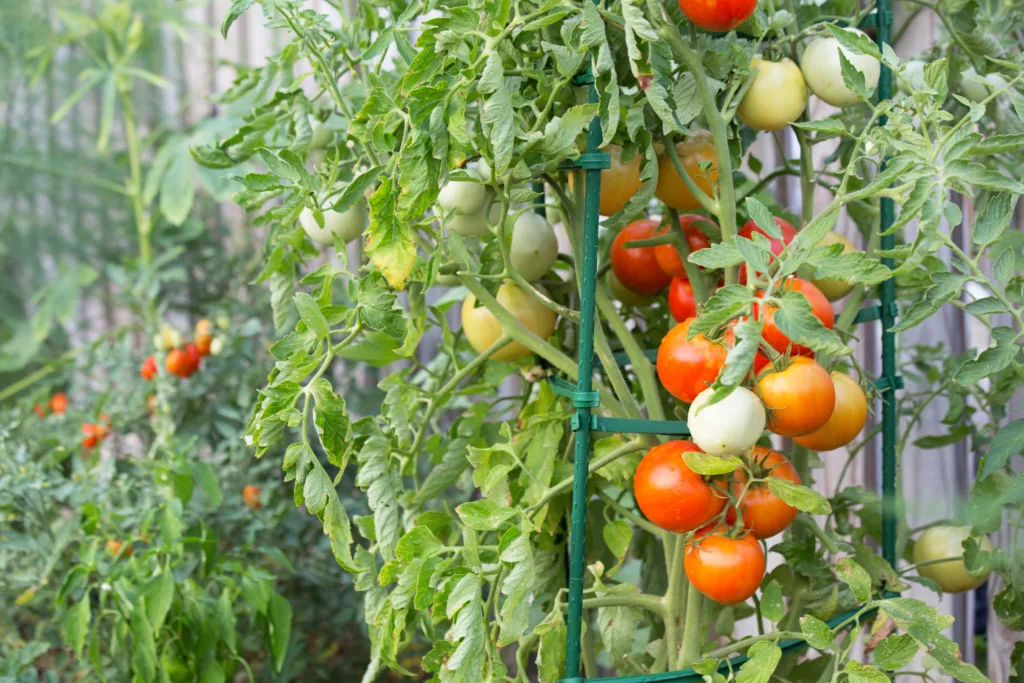Staking tomato plants is a common gardening practice that involves supporting the plants as they grow. This method has several benefits, which can lead to healthier plants and a better tomato harvest. Here’s why staking is essential for your tomato plants:

why do you stake tomato plants
1. Improves Air Circulation
Staking tomato plants lifts them off the ground, allowing better air circulation around the foliage. This helps to keep the leaves dry and reduces the risk of fungal diseases, such as blight and mildew, which thrive in moist conditions.
2. Prevents Fruit Rot
When tomato plants are staked, the fruits are kept off the soil, which helps prevent rot and pest damage. Tomatoes that touch the ground are more likely to come into contact with soil-borne diseases and insects, which can spoil your crop.
3. Facilitates Easier Harvesting
Staking makes it easier to see and reach the tomatoes. This simplifies the harvesting process, ensuring you pick the fruits at their peak ripeness. It also minimizes the risk of damaging the plant while trying to locate the tomatoes.
4. Promotes Healthier Plants
Supporting tomato plants with stakes encourages them to grow upwards rather than sprawling along the ground. This vertical growth can lead to stronger, healthier plants because they receive more sunlight and have better air circulation.
5. Saves Space
Staking is particularly beneficial for gardeners with limited space. By training the plants to grow upwards, you can fit more tomato plants into a smaller area, making efficient use of your garden space.
6. Enhances Plant Growth
Staked plants can devote more energy to producing fruit rather than supporting sprawling stems. This can lead to larger and more abundant tomatoes, providing a better yield for your garden.
How to Stake Tomato Plants
Staking tomato plants is a straightforward process. Here are the basic steps:
- Choose the Right Fiberglass Plant Stakes: Use sturdy fiberglass stakes, that are at least 6-8 feet tall to accommodate the plant’s growth.
- Insert Stakes Early: Insert the stakes into the ground shortly after planting your tomatoes to avoid damaging the roots later. Place the stakes about 2-3 inches away from the main stem.
- Tie the Plants: As the plants grow, use soft ties or garden twine to gently secure the main stem to the stake. Tie the plants at regular intervals, making sure not to constrict the stem.
- Prune Regularly: Pruning the lower leaves and suckers (small shoots that develop between the stem and branches) can help maintain a single main stem and improve air circulation.
By staking your tomato plants, you can ensure they grow healthy and strong, leading to a more bountiful and enjoyable harvest. Happy gardening!
 info@unicomposite.com
info@unicomposite.com


























